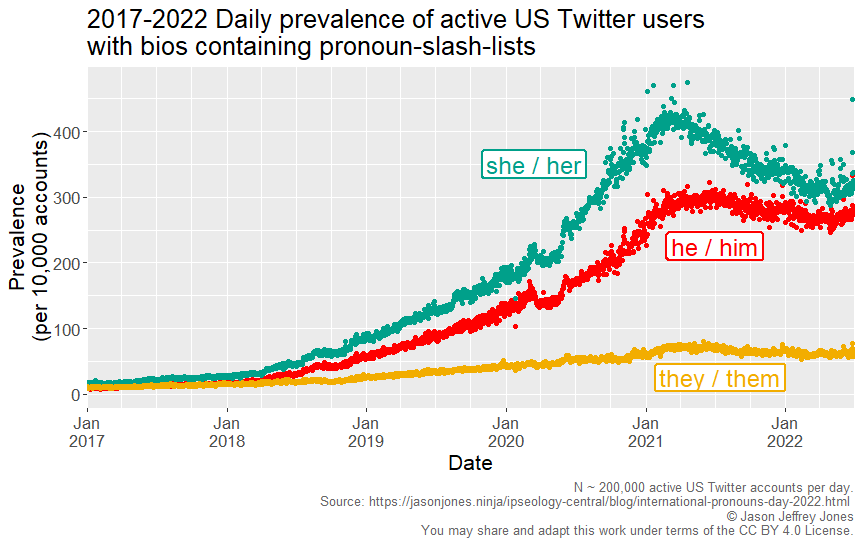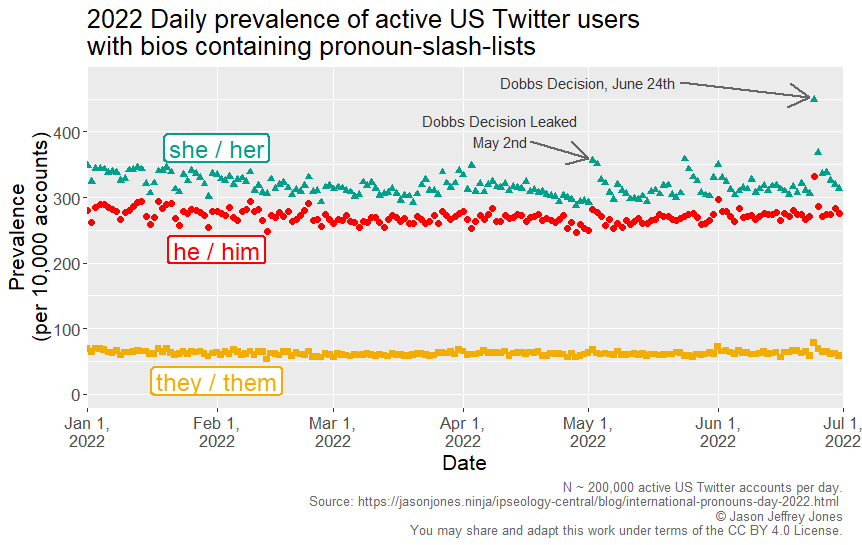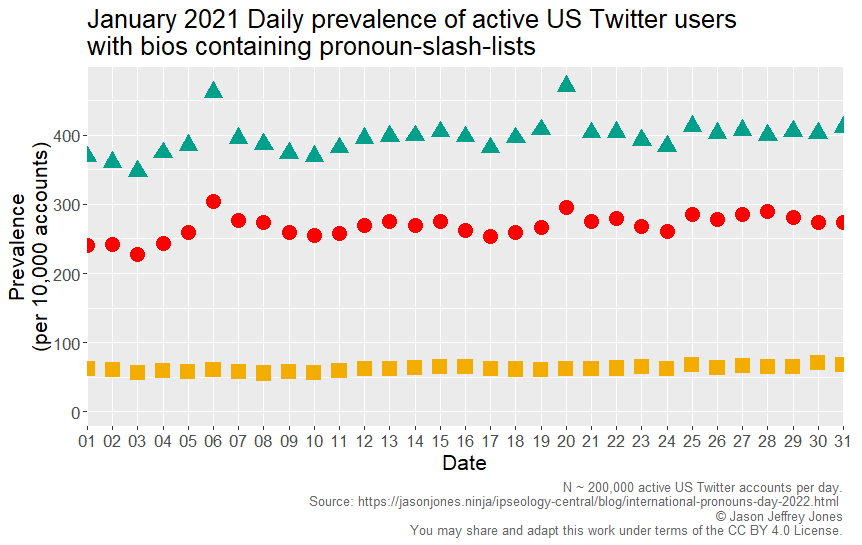Ipseology
using large datasets
and computational methods
2022 International Pronouns Day and Twitter Visibility
Estimating pronoun list prevalence in daily active US users' Twitter bios
2022-10-19
Last year for International Pronouns Day, I created a visualization depicting the increasing frequency of preferred pronouns lists within profile bios in a longitudinal sample of 1.35 million US Twitter users.
This year, I did something slightly different. I focused on visibility instead. I estimated the visibility of preferred pronouns in cross-sectional samples of US users - specifically those who were active each day 2017-2022.

What does it mean?
On each day, say you looked at 10,000 tweets (chosen randomly from all tweets tweeted that day). The numbers in the graph above tell you how many authors of those tweets have she/her, he/him, or they/them in the text of their profile bio. In all three series, the numbers have increased from where they began.
- From January 1, 2017 to June 30, 2022, the prevalence of
she/herincreased nearly 20x from 16 to 313. - The prevalence of
he/himincreased nearly 28x from 10 to 276. - The prevalence of
they/themincreased 5x from 11 to 58.
I call these measures of visibility because the numbers represent something different than merely the presence of pronoun lists in bios. The value also depends upon the user being active (tweeting) and thus visible in others' timelines. Read this open-access, peer-reviewed article for more on the complementary strengths of cross-sectional and longitudinal analysis.
Let's zoom in on 2022.
You probably noticed something happening in June 2022 in the first figure. I've labelled what I think is the cause on the graph below.

On the date that the Dobbs US Supreme Court decision was first leaked and again on the day it was released, users with pronoun lists in their bios were unusually active (and therefore visible).
Let's zoom in tighter. How about January 2021?

Surely, two dates grab one's eye here: the January 6 United States Capitol attack and the Jan 20th Inauguration of President Biden.
This work extends work done by Liam Tucker. Liam is an amazing student currently majoring in Computer Science at The University of Alabama. This past summer, Liam investigated the prevalence, correlated language and social clustering of pronouns within profile bios as an REU in the Computational Social Science of Emerging Realities Group. One point that repeatedly came up in Liam's results was that US Twitter users with pronoun lists in their bios seemed to be particulary interested in politics. The results here corroborate that finding. We are currently collaborating on a manuscript to share these results.
I think temporal trends in personally expressed identity are interesting, and I show these data here in case others do, too.
Ipseology - Read and explore more
When I show people data like that above, they sometimes ask, "What other words are changing?" The best answer to that question is a long list of links, so here it is:
- Search for trends on any set of words: Jason J. Jones Identity Trends V1
- Read a peer-reviewed, open-access research article about the methods: A dataset for the study of identity at scale: Annual Prevalence of American Twitter Users with specified Token in their Profile Bio 2015–2020
- Read a peer-reviewed, open-access research article about political words: Using Twitter Bios to Measure Changes in Self-Identity: Are Americans Defining Themselves More Politically Over Time?
- Read a blog post about Black Lives Matter signifiers: Estimation of Black Lives Matter prevalence in US users' Twitter bios at daily resolution.
- Quickly get familiar with ipseology terminology: Ipseology Glossary